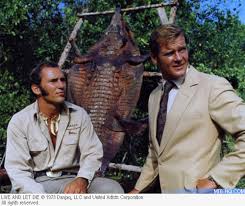 Leni Riefenstahl’s Nazi propaganda film Triumph of the Will soon collapses inwards under its own largeness and lack of substance. Scene after scene of columns of soldiers marching, or standing in massed formation on parade grounds. The viewer gets bored, and starts trying to see signs of humanity intruding on the edge of the celluloid.
Leni Riefenstahl’s Nazi propaganda film Triumph of the Will soon collapses inwards under its own largeness and lack of substance. Scene after scene of columns of soldiers marching, or standing in massed formation on parade grounds. The viewer gets bored, and starts trying to see signs of humanity intruding on the edge of the celluloid.
Wow, that sure is a lot of soldiers. Are some of them uncomfortable? Do they have itches they aren’t allowed to scratch? Where are they billeted and fed? Were there latrine pits dug somewhere? Where did Hitler go to the toilet? I would have liked a film made about these topics, and in a way, Riefenstahl made a film about the most boring aspect of Hitler’s rise to power.
I feel this way about many films: where the camera all but twists and cavorts to avoid capturing things that might be exciting. For example, although I don’t like the James Bond films, many things in their background are absolutely fascinating.
For example, the man called Ross Heilman.
He was a Jew from Florida who moved to Jamaica, renamed himself “Ross Kananga”, claimed Seminole heritage, and opened a crocodile farm. Some people have biographies that seem to be written by a random word generator, and he was one of them. At the height of his success Ross had more than a thousand crocodiles, and he would harvest their skins. In those days, crocodile skin sold for $2 a pound, and $450 for a reasonably good entire skin.
One day, location scouts for the film Live and Let Die discovered the farm, and wanted to use it as the fictional nation of San Monique. Ross obviously made quite an impression on the cast and crew, because they named the villain of the film “Kananga”. Ross doubled for Roger Moore in the infamous scene where he jumps across a river on the backs of living crocodiles, something that was hazardous to his health.
Something like that is almost impossible to do. So, I had to do it six times before I got it right. I fell five times. The film company kept sending to London for more clothes. The crocs were chewing off everything when I hit the water, including shoes. I received 193 stitches on my leg and face.”
Ross never became a film star, and he did not have long to live. In 1978, he died of cardiac arrest while spearfishing in the Everglades. Or so some stories say. There is a conspiracy.
This is from the autobiography of inventor, businessman, and filmmaker Arthur Jones.
“Later, he had so many people after him that he decided the only way out was to fake his own death, so that people would stop looking for him; so he took his grandmother out in a small boat in the Everglades in order to have a witness to his death. The plan being to turn over the boat in a spot where she could easily escape, but where he could get away; leaving the impression that he had drowned, even though his body was never supposed to be found.
“But it was found; it was a cold day, and he went into shock and did drown. The grandmother did get out alive, and was able to provide a true account of his death.
“I was after him for having done one of the cruelest things I ever witnessed; he tied a bunch of crocodiles very tightly, packed them in a big trailer and then left them there for weeks. When their legs were untied their feet were already rotting off, even though they were still alive. I figured tit for tat, nit for shit, and had similar plans for him; but he was dead before I could find him. Several other people had plans for him as a result of some of his other stunts.”
It sounds implausible and hard to believe (and might have pleased Ross Heilman in this regard), but I wonder if it’s common for a man to suffer cardiac arrest at the age of 32.
No Comments »
Comments are moderated and may take up to 24 hours to appear.
No comments yet.
